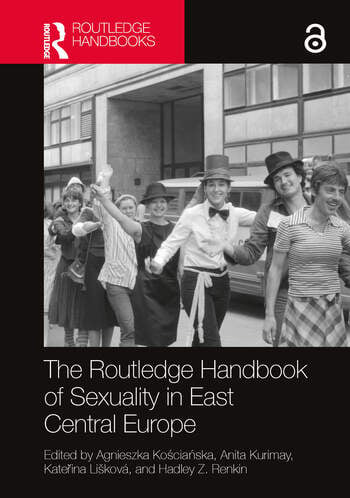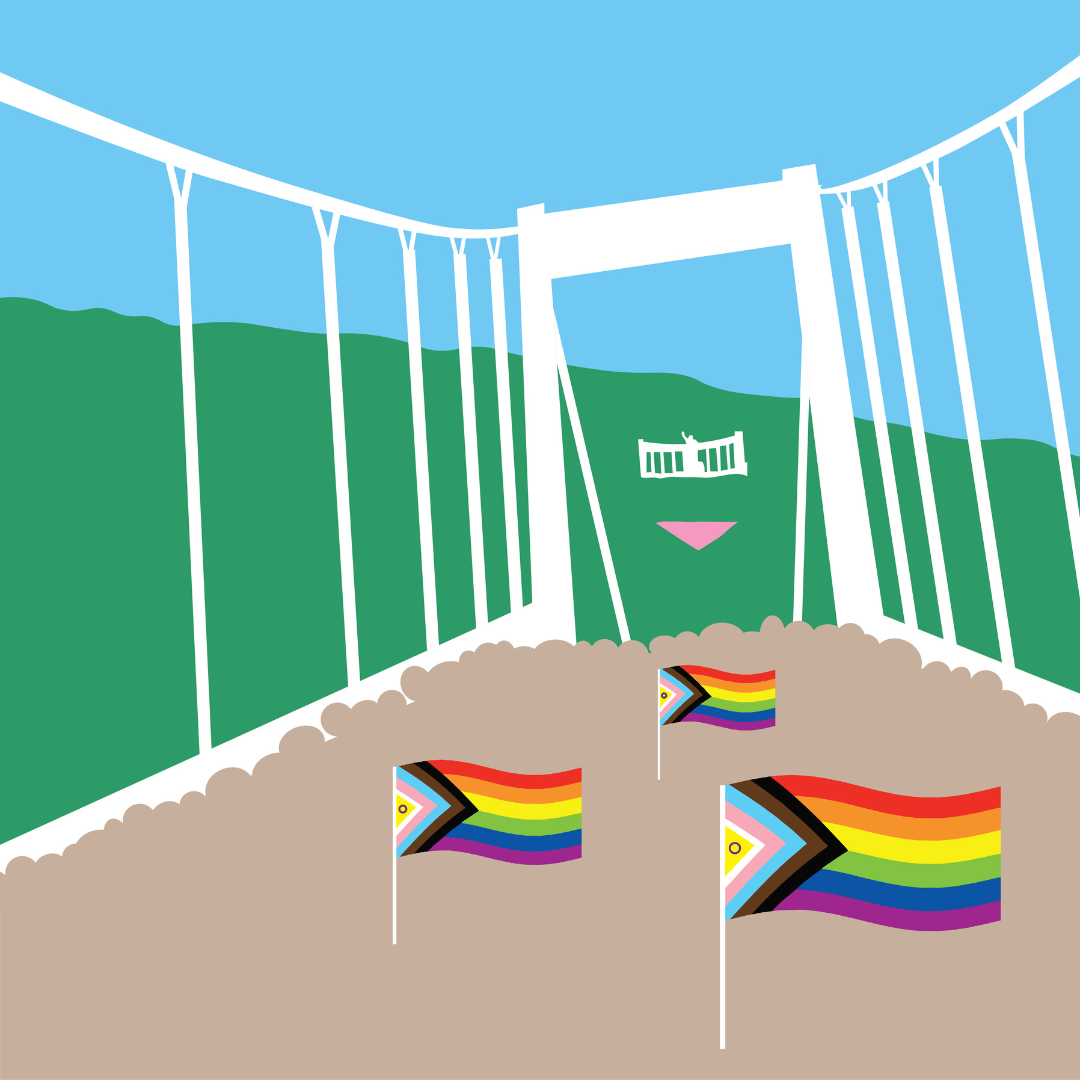Building the canon: The past and present of sexuality in East Central Europe

Published by: Routledge

What do sexual satisfaction in state-socialist Czechoslovakia and Hungary, venereal disease in the army of the Austro-Hungarian Monarchy, and the social media presence of Polish queer migrants have in common? Studying these themes generates crucial insights into the dynamics of sexuality in East Central Europe, as they are explored in some of the many chapters in this astonishingly rich and extensive volume, edited by Agnieszka Kościańska, Anita Kurimay, Kateřina Lišková, and Hadley Z. Renkin. Spanning a wide, almost encyclopedic, variety of topics from the 19th century to the present, the interdisciplinarity of The Routledge Handbook of Sexuality in East Central Europe is already reflected in the backgrounds of the editors, combining the fields of anthropology, history, ethnology, and sociology. Consequently, the analyzed sources are various in nature, from written (archival, published, digital) documents to visual and oral materials. As such, the publication constitutes not just a building block but a cornerstone in the canon of academic scholarship on sexuality in the region.
The Handbook consists of 41 chapters categorized into eight sections: Non-normative sexualities; Family, marriage, and kinship; Race/ethnicity and nationalism; Birth control, reproduction, and health; Religion; Sex work and mobility; Sexualized violence; and Sex education. Some chapters give a thorough overview and highlight the longer historical trends in specific topics, such as the one on sexualized racism in Poland by Agnieszka Kościańska. Others analyze specific cases, events, or organizations, like the chapter about the “Fifth Woman Campaign” against gender-based violence in Slovakia, written by Zuzana Mad’arová, or the history of “Operation Hyacinth” and state violence against queer subjects by Jędrzej Burszta. Yet another approach is to apply a comparative method, as in the case of the writing by Monika Talarczyk about the reception of Károly Makk’s sapphic movie in Poland and Hungary in the 1980s.
The structure of the Handbook does not hinder the authors and editors from overcoming the binaries of desire/violence, liberation/coercion, or innovation/tradition, as the chapters include many of the complexities and contradictions that emerge when exploring the myriad ways sexuality functions as a category of analysis. These tensions are portrayed in particularly nuanced ways in the chapter about the entanglements of heterosexuality, nationalism, and Orientalism in Hungarian politics, written by Zsuzsanna Varga and Katrin Kremmler, the chapter about sexuality, the state, and the Catholic Church in postwar Poland by Natalia Jarska, and the chapter in which Kateřina Lišková scrutinizes divorce cases in socialist Czechoslovakia. Similarly, the contributions transgress national frameworks and challenge the East/West binary, like the chapter on exchanging sex and goods between Hungarian women and Italian men during the long 1960s. The author, Priska Komaromi, explores how socialist morality and policing towards women engaging in transactional sex intersected with growing tourism, through cases of working-class Southern Italian tourists visiting Budapest and creating intimate relationships with local women.
Another topic strikingly visible throughout the Handbook is the countless ways of self-organizing and activism in East Central Europe, whether unfolding under democratic or authoritarian regimes
The multitude and variety of arguments in the Handbook make it particularly difficult to single out the most important ones. Still, I discuss two recurring topics outlined by authors in more than one chapter. The first one is challenging the idea of progress and linear narratives, whether it is about the rights of queer individuals or the changes in abortion and birth control methods and policies. Agata Ignaciuk has shown, for example, how the “Polish history of contraceptive limitation, innovation, and imitation contributes to a non-linear history” of family planning and contraceptive technologies on the global level and to the de-centering of Western perspectives (p. 217). Another topic strikingly visible throughout the Handbook is the countless ways of self-organizing and activism in East Central Europe, whether unfolding under democratic or authoritarian regimes, having a top-down or a bottom-up approach, or including large groups of people or just a single person. A particularly thought-provoking example is the chapter about “self-education” as activism in the case of Polish trans individuals from the 1960s to post-socialism, in which Maria Dębińska flips the oppression narrative surrounding the trans community, portraying them as active members of society, who collected and disseminated knowledge, socialized, and organized, in order to educate themselves on gender identification and facilitate social change.
The Handbook’s richness, scholarly rigor, and academic proficiency are in contrast with its grammatical and terminological inconsistencies, especially in the cases of various names and institutions and the uses of both American and British English. This is less of a criticism and more of an observation of the various challenges the editor(s) of such a publication face, such as standardization and translation of names and terms from a linguistically, culturally, and ethnically diverse region that is East Central Europe.
Nevertheless, the relevance and importance of the Handbook are indisputable, amidst current events in East Central Europe, such as the 2025 Budapest Pride, which rightfully gained huge international attention for turning into a mass demonstration of tens of thousands who marched for human rights and against the current Hungarian government.1 Chapters like “A brief history of Hungarian queer politics in the 20th and 21st centuries” by Anita Kurimay and Hadley Z. Renkin are crucial for understanding the historical and sociological contexts of such powerful demonstrations, unfolding in front of our eyes. To quote from the chapter, “changes in both Hungarian queer life and political agency and their relationship to the state occurred before 1989,” since a gay and lesbian organization already emerged in the country in late state-socialism (p. 69).
Maria Bucur was right to point out recently that the history of sexuality in the region is flourishing, with the burgeoning of monographs, articles, and other publications in the last two decades.2 After the recently published and exceptionally comprehensive edited volumes focusing on gender, feminism, and women’s rights in East Central Europe, which have been much awaited, it is refreshing to see a focus particularly on sexuality on a similar scale.3 By now, it has also become clear that building upon and expanding this canon is not only a question of quantity in academic publications. Until recently, the “different” and relatively “unknown” countries of the Eastern “bloc” were still seen as lying on the “other” side of the Iron Curtain, especially in terms of politics, gender, sexuality, and social movements. Publications like The Routledge Handbook of Sexuality in East Central Europe change the perspective, as both “East” and “West” are reimagined from the diverse, ever-changing region of East Central Europe.
Zsófia Anna Veszely (she/her/ő) is a third-year PhD History researcher at the European University Institute (Italy). Her work focuses on sex education and sexual knowledge flow in state-socialist and post-socialist Hungary and beyond. At the EUI, she participated in the project GLOBINTERSECT – Global perspectives on intersectional histories and is a co-organizer of the Interviewing and Oral History Working Group. Previously, she received a BA degree in Sociology at ELTE University (Hungary) and an MA degree in European Women’s and Gender History at the Central European University (Austria).
1 https://www.theguardian.com/world/2025/jun/28/tens-of-thousands-defy-hungarys-ban-on-pride-in-protest-against-orban
2 Bucur, Maria. “It’s Complicated: The History of Sexuality in Eastern Europe Flourishes.” Aspasia 16, no. 1 (2022): 189–98. https://doi.org/10.3167/asp.2022.160112.
3 See for example: Fábián, Katalin, Janet Elise Johnson, and Mara Lazda, eds. The Routledge Handbook of Gender in Central-Eastern Europe and Eurasia. Routledge, Taylor & Francis Group, 2022. https://doi.org/10.4324/9781138347762; and Lóránd, Zsófia, Adela Hîncu, Jovana Mihajlović Trbovc, and Katarzyna Stańczak-Wiślicz, eds. Texts and Contexts from the History of Feminism and Women’s Rights: East Central Europe, Second Half of the Twentieth Century. Central European University Press, 2024. https://library.oapen.org/handle/20.500.12657/98220.
